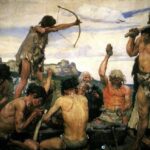Australia, the land of stunning beaches, vast outback, and adorable koalas, is also home to some of the most fascinating yet dangerous animals in the world. This continent’s isolation has given rise to an extraordinary array of wildlife, many of which are found nowhere else on Earth. But amidst this beauty and uniqueness lies a hidden danger – animals that can pose serious threats to humans.
Understanding these creatures is not just about satisfying our curiosity or fueling our fears. It’s about safety, respect, and coexistence. For residents, it’s crucial to know what lurks in their backyard, and for visitors, it’s about marveling at Australia’s natural wonders while staying safe. After all, knowledge is the first step towards prevention.
But how do we decide which animals are the most dangerous? It’s not just about the ones with the sharpest teeth or the deadliest venom. Our ranking is based on a combination of factors:
- Lethality: How likely is an encounter with this animal to be fatal?
- Aggressiveness: Does the animal attack without provocation?
- Encounter Rate: How often do humans come across this animal?
- Venom Toxicity: For those that are venomous, how deadly is their poison?
- Conservation Status: We also consider the conservation needs of these animals, as understanding them is key to both our safety and their survival.
With these criteria in mind, let’s embark on a journey through Australia’s wilderness to meet the top 10 most dangerous animals in Australia. From the depths of the ocean to the heart of the bush, these creatures demand our respect and awareness.
Top 10 Most Dangerous Animals In Australia
1. Box Jellyfish (Chironex fleckeri)

Among the crystal-clear waters of Australia lurks a creature as beautiful as it is deadly: the Box Jellyfish. Known scientifically as Chironex fleckeri, this jellyfish is not your average sea jelly. It’s the most venomous marine animal known to humans, making it a fascinating yet fearsome inhabitant of Australian waters.
Description and Habitat
The Box Jellyfish boasts a transparent, box-shaped bell that can grow up to 30 cm (about 12 inches) on each side, with up to 15 tentacles at each corner. These tentacles can reach an astonishing 3 meters (about 10 feet) in length. Chironex fleckeri is primarily found in the warm, coastal waters of northern Australia, thriving in shallow waters alongside mangroves, beaches, and estuaries from October to May, which coincides with the Australian summer and monsoon seasons.
Reasons for Danger
The danger of the Box Jellyfish lies in its potent venom, capable of attacking the heart, nervous system, and skin cells. Unlike other jellyfish stings that might cause irritation or pain, a sting from Chironex fleckeri can be fatal within minutes. The venom is so powerful that it has caused at least 63 deaths since records began in 1883. The immediate excruciating pain, followed by possible cardiovascular collapse, makes it a creature to avoid at all costs. Despite its beauty, swimming near Box Jellyfish without protective gear during its peak season is a risk that can have deadly consequences.
2. Saltwater Crocodile (Crocodylus porosus)
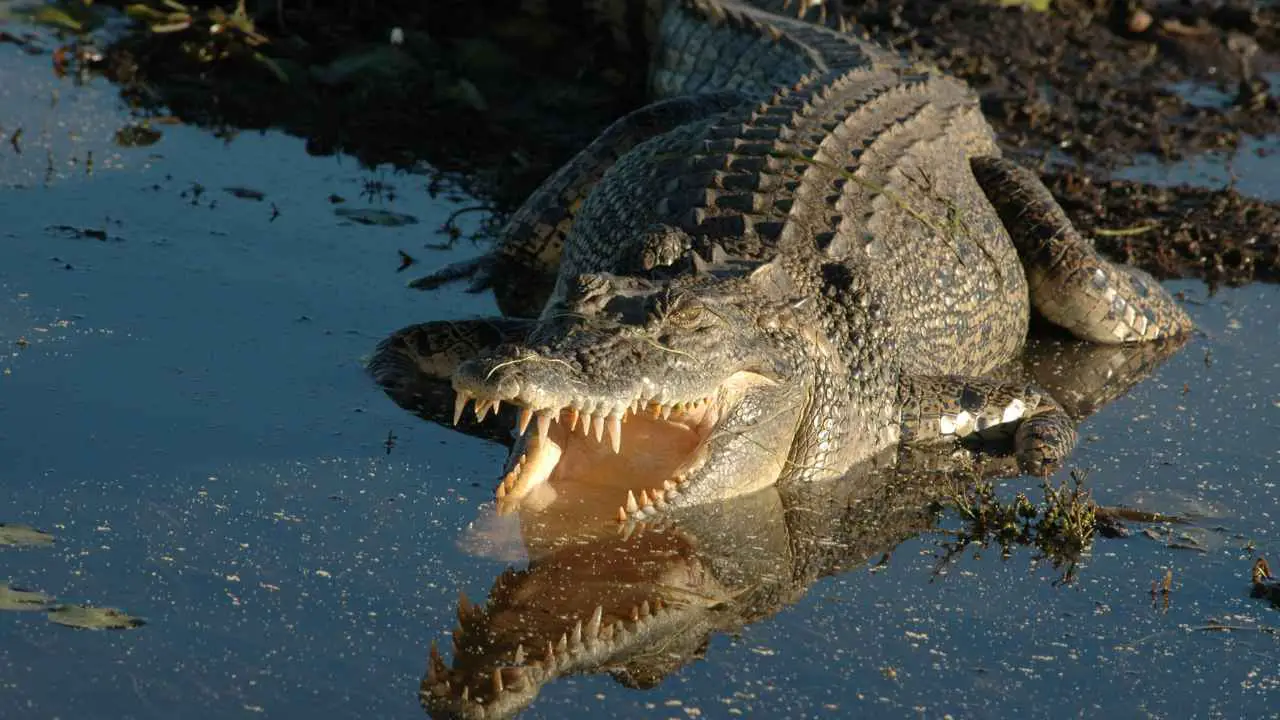
The Saltwater Crocodile, or “Salty” as it’s sometimes affectionately known, is the largest of all living reptiles and a true apex predator. Its scientific name, Crocodylus porosus, hints at its prowess in the water, where it reigns supreme. This crocodile is a testament to the wild, untamed nature of Australia’s rivers and coastal regions.
Description and Habitat
Saltwater Crocodiles can grow up to 7 meters (about 23 feet) in length and weigh over 1,000 kilograms (about 2,200 pounds). They have a broad body, a powerful tail, and jaws capable of crushing bone. Salty makes its home in a variety of water bodies, from rivers and estuaries to coastal areas, even venturing into the open sea. They are predominantly found in the northern regions of Australia, spanning from the eastern coast of Queensland to the western coast of the Northern Territory.
Reasons for Danger
The Saltwater Crocodile is dangerous due to its size, strength, strongest bite force and inherent aggression. It is an opportunistic predator that can attack anything that enters its territory, including humans. The crocodile’s method of killing—dragging its prey underwater to drown before eating—adds to its fearsome reputation. There have been numerous attacks on humans, often fatal, which are attributed to the crocodile’s territorial nature and the increasing human activity in its natural habitat. These encounters serve as a grim reminder of the power and danger of the Saltwater Crocodile, underscoring the importance of caution and respect for these ancient creatures in their natural environment.
3. Sydney Funnel-Web Spider (Atrax robustus)
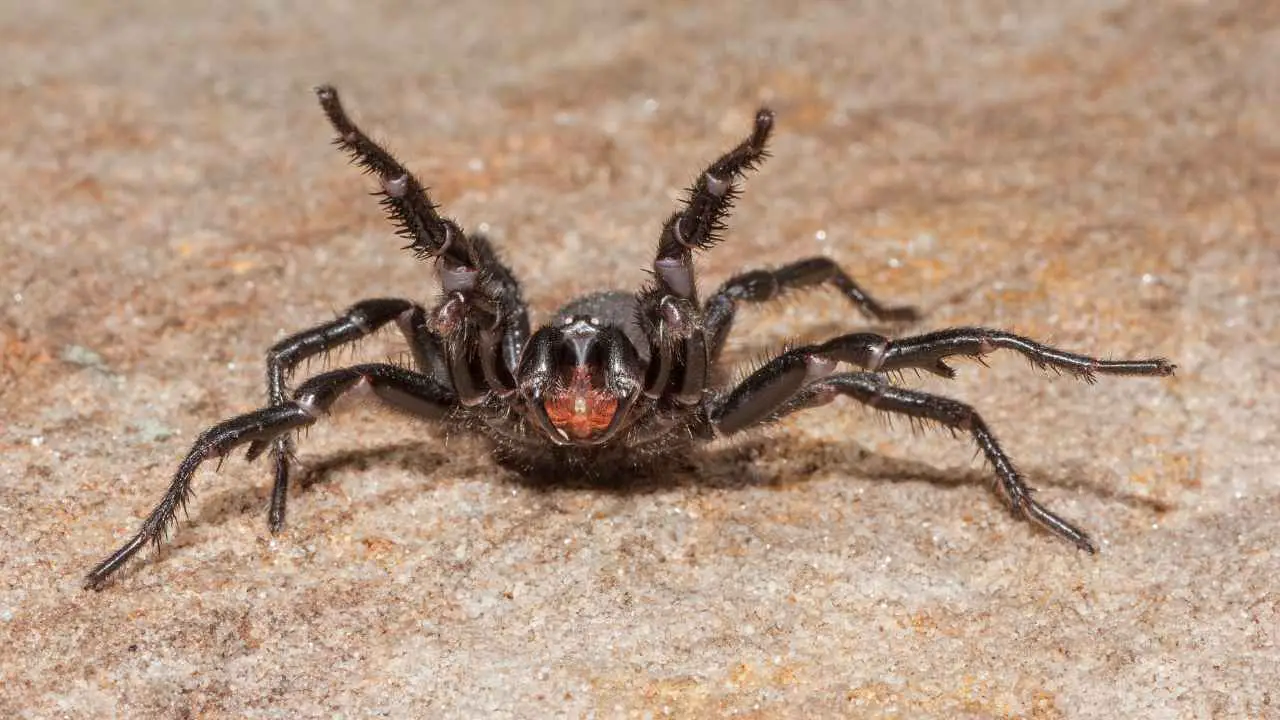
In the shadowy nooks of Australia’s eastern coast lies a creature as menacing as it is small: the Sydney Funnel-Web Spider. With its scientific name, Atrax robustus, this spider is among the most feared in Australia. Its notoriety stems from its potent venom, aggressive nature, and proximity to urban areas.
Description and Habitat
The Sydney Funnel-Web Spider is easily recognizable by its glossy, dark body, which can reach lengths of up to 5 cm (about 2 inches) for females and slightly smaller for males. This spider prefers the moist, cool environments found in forests and shaded gardens. It’s particularly prevalent in New South Wales, around Sydney, where it constructs burrows lined with silk that serve both as a home and a trap for prey.
Reasons for Danger
What makes the Sydney Funnel-Web Spider truly dangerous is its highly toxic venom, which is capable of causing severe illness and even death in humans. Unlike many venomous creatures that might flee at the sight of a human, the Sydney Funnel-Web can be quite aggressive when threatened. Its large fangs can penetrate nails and soft shoes, delivering a powerful venom that affects the nervous system. Prior to the development of an antivenom in 1981, bites from this spider were often fatal. While antivenom has greatly reduced fatalities, encounters with the Sydney Funnel-Web Spider are still incredibly dangerous and medical attention should be sought immediately if bitten.
4. Blue-Ringed Octopus (Hapalochlaena)
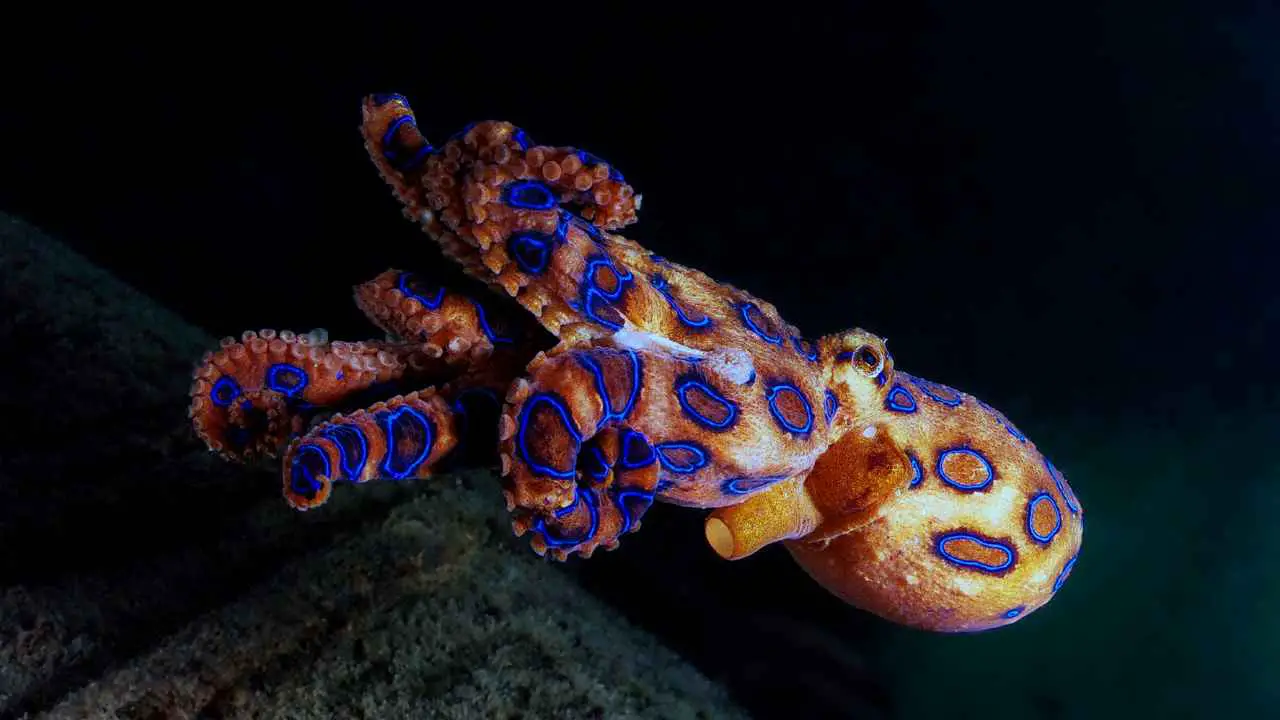
Don’t let its size fool you. The Blue-Ringed Octopus, belonging to the genus Hapalochlaena, is as beautiful as it is deadly. Adorned with iridescent blue rings that pulsate when threatened, this octopus carries one of the most deadly venoms found in the ocean. Its small size and docile nature when not provoked make it a deceptive danger lurking in the shallow waters of Australia.
Description and Habitat
The Blue-Ringed Octopus can be found in tide pools and coral reefs across the Pacific and Indian Oceans, with a significant presence along the southern coast of Australia. It is diminutive, with an arm span of only 20 cm (about 8 inches) and a body slightly larger than a golf ball. When not displaying its vibrant blue rings, it blends seamlessly into its surroundings, making it hard to spot.
Reasons for Danger
The main reason the Blue-Ringed Octopus is considered one of the most dangerous animals in Australia is its venom, which contains tetrodotoxin, a neurotoxin potent enough to kill humans. There is no known antivenom for a blue-ringed octopus bite, making it particularly perilous. The bite is often painless, and victims may not realize they’ve been envenomed until respiratory depression and paralysis begin to set in. The lack of immediate symptoms and warning signs contributes to the danger, as prompt medical intervention is critical. Despite its lethal potential, the Blue-Ringed Octopus only attacks when provoked or stepped on, making most incidents accidental. Awareness and caution in their natural habitat can prevent most dangerous encounters with this stunning yet deadly creature.
5. Eastern Brown Snake (Pseudonaja textilis)
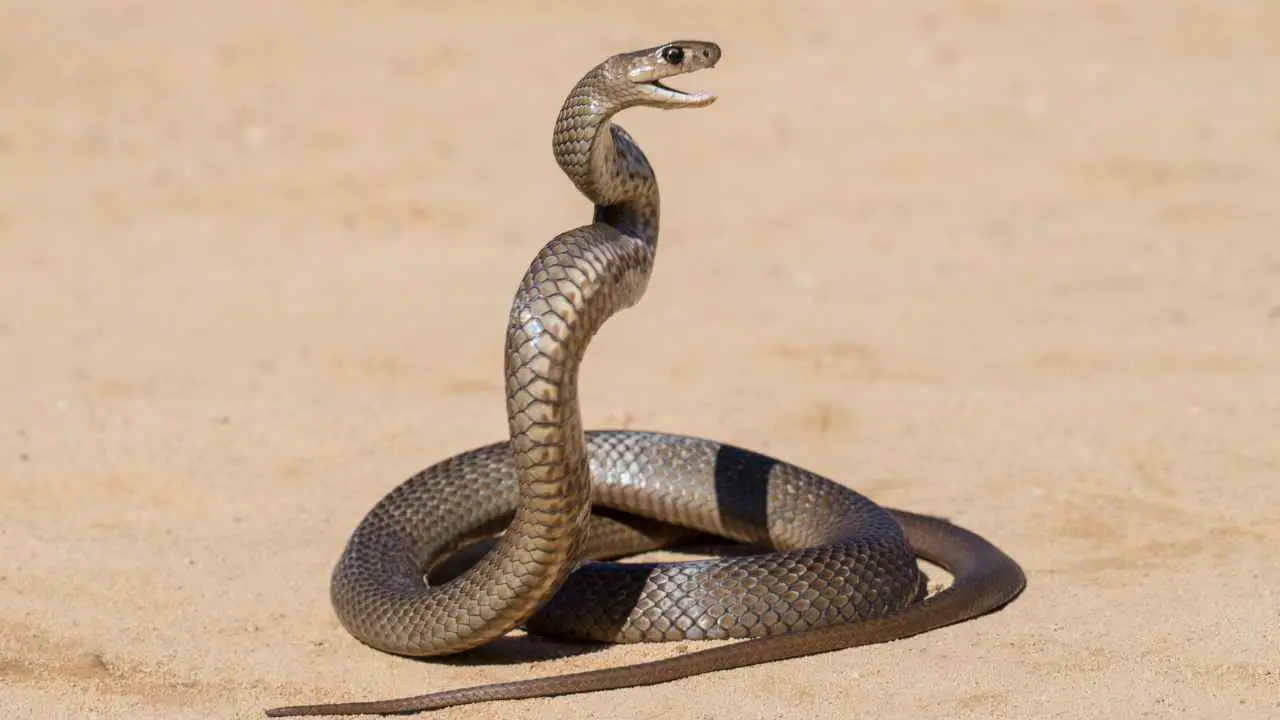
Slithering through the underbrush and across the vast landscapes of Australia is the Eastern Brown Snake, Pseudonaja textilis, one of the world’s most venomous snakes. Its unassuming appearance belies the danger it poses, making it a respected and feared presence in its natural habitat.
Description and Habitat
The Eastern Brown Snake sports a slender body that can range in color from very light tan to almost black, depending on the individual and its environment. Adult snakes typically measure between 1.5 to 2 meters (about 4.9 to 6.6 feet) in length. This species is remarkably adaptable and can be found in a variety of environments across eastern Australia, from arid deserts to coastal regions, and even in urban areas where it often comes into contact with people.
Reasons for Danger
The primary reason the Eastern Brown Snake is considered one of the most dangerous animals in Australia is its highly potent venom, which is capable of causing rapid paralysis and uncontrolled bleeding. Coupled with its tendency to inhabit areas close to human activity, encounters with this snake are not only more common but also more likely to result in a bite. Although it prefers to flee from threats, the Eastern Brown Snake will defend itself aggressively if cornered. Most bites occur when people inadvertently step on the snake or attempt to catch or kill it. Immediate medical treatment is crucial after any bite, as the effective antivenom can prevent the potentially fatal consequences of its venom.
6. Stonefish (Synanceia)
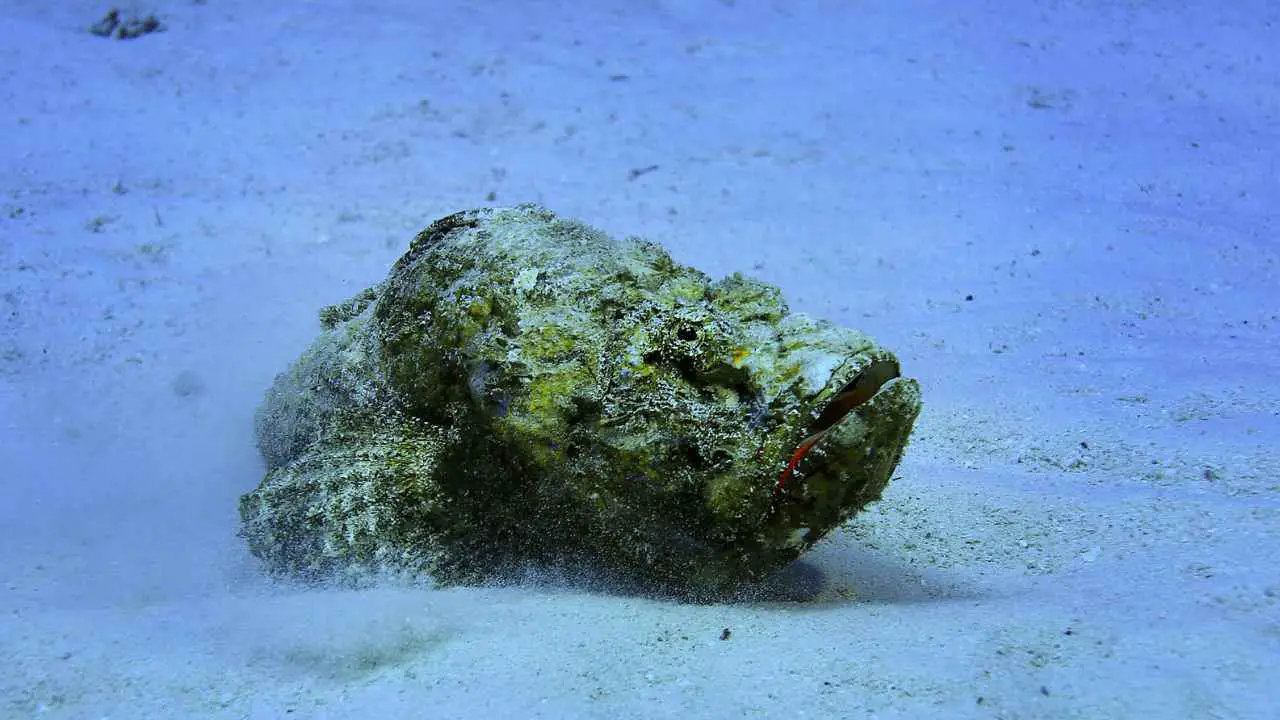
The Stonefish, belonging to the genus Synanceia, is a master of disguise and the most venomous fish known to science. Its ability to blend into the rocky and coral environments it inhabits makes it an unseen hazard in the warm coastal waters of Australia.
Description and Habitat
Stonefish have a stocky build and a mottled appearance that closely resembles the rocks and corals among which they live, making them nearly impossible to detect. They are typically found in shallow tropical waters, hidden among rocks and corals, waiting to ambush their prey. Their presence is not restricted to the ocean; some species can also survive in freshwater, extending their range into rivers and estuaries.
Reasons for Danger
The danger of the Stonefish lies in its venomous dorsal fin spines, which can inject a highly toxic venom capable of causing excruciating pain and even death in humans. The camouflage of the Stonefish leads to unintentional encounters, most commonly when an unsuspecting individual steps on one. The venom is potent enough to kill if not treated promptly, making it imperative to seek medical attention immediately after a suspected Stonefish sting. While antivenom is available and effective in treating Stonefish stings, the best prevention is caution and awareness when walking in their habitats.
7. Redback Spider (Latrodectus hasselti)
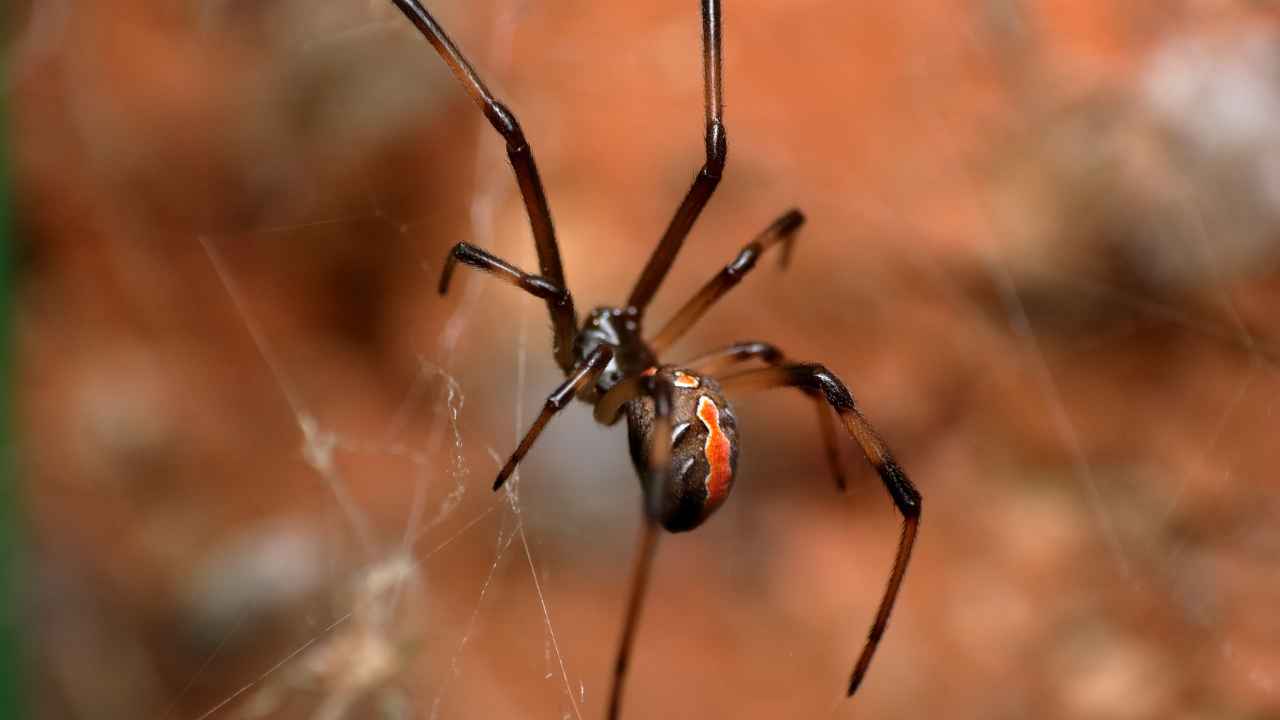
The Redback Spider, known scientifically as Latrodectus hasselti, is a creature that combines beauty with danger. Its distinctive red stripe on the upper side of its abdomen makes it one of Australia’s most recognizable and feared spiders. Despite its small size, the Redback Spider carries a venom that demands respect and caution.
Description and Habitat
Typically found across Australia, Redback Spiders thrive in urban and natural environments alike. They prefer warm, sheltered spots such as sheds, toilets, and underneath outdoor furniture, making them frequent uninvited guests in human dwellings. The female Redback, easily identified by her black body and the famous red stripe, is the more dangerous of the sexes, with males being smaller and less venomous.
Reasons for Danger
The primary reason the Redback Spider is considered dangerous is due to its venom, which contains a potent neurotoxin capable of causing severe pain, nausea, and, in rare cases, more serious symptoms in humans. Bites are relatively common, given the spider’s tendency to inhabit areas frequented by humans. Fortunately, an effective antivenom has been available since the 1950s, significantly reducing fatalities. Nonetheless, the Redback Spider’s venom toxicity and proclivity for human habitats make it a creature to be wary of.
8. Bull Shark (Carcharhinus leucas)

The Bull Shark, with its scientific name Carcharhinus leucas, is known for its incredible adaptability and unpredictable nature. Unlike many other shark species, Bull Sharks are notorious for their ability to thrive in both salt and fresh water, making them one of the most versatile predators in the aquatic world. Their presence in shallow coastal waters, rivers, and estuaries brings them uncomfortably close to human activity.
Description and Habitat
Bull Sharks are robust, with a stout body and a broad, flat snout. Adults can reach lengths of up to 3.5 meters (about 11 feet) and weigh over 230 kg (about 500 pounds). They are commonly found in tropical and subtropical waters worldwide, including the eastern and northern coasts of Australia. Their ability to swim up rivers means they can also be encountered far from the ocean, in freshwater systems.
Reasons for Danger
The danger posed by Bull Sharks comes from their aggression, size, and proximity to human-populated areas. They are among the few shark species that are known to attack humans unprovoked. Their preference for shallow waters increases the likelihood of encounters with swimmers and surfers. While shark attacks are rare, the Bull Shark is responsible for a significant portion of near-shore incidents, making it one of the most dangerous sharks to humans. The combination of their aggressive nature, powerful build, and habit of frequenting populated waters makes the Bull Shark a respected and feared presence in Australia’s waterways.
9. Common Death Adder (Acanthophis antarcticus)

The Common Death Adder, bearing the scientific name Acanthophis antarcticus, is as deadly as its name suggests. This snake, with its deceptively benign appearance, is one of the most venomous in Australia and the world. Its method of hunting and self-defense mechanisms place it among the continent’s most dangerous reptiles.
Description and Habitat
The Common Death Adder has a robust body and a broad, flattened head, resembling the leaves and debris of the forest floor. It primarily resides in eastern and coastal southern Australia, favoring woodland, forest, and scrubland habitats. This snake’s camouflage is perfect for its hunting technique, lying in wait for unsuspecting prey.
Reasons for Danger
The danger of the Common Death Adder lies in its potent venom, which is highly neurotoxic, and its ability to remain undetected until it’s too late. Its camouflage allows it to blend seamlessly with its surroundings, making it nearly invisible to both prey and potential threats, including humans. A bite from a Death Adder can lead to paralysis and, if not treated quickly with antivenom, can be fatal. The snake’s reluctance to move away from danger means that unsuspecting walkers or hikers can easily step on them, provoking a defensive bite.
10. Cassowary (Casuarius)
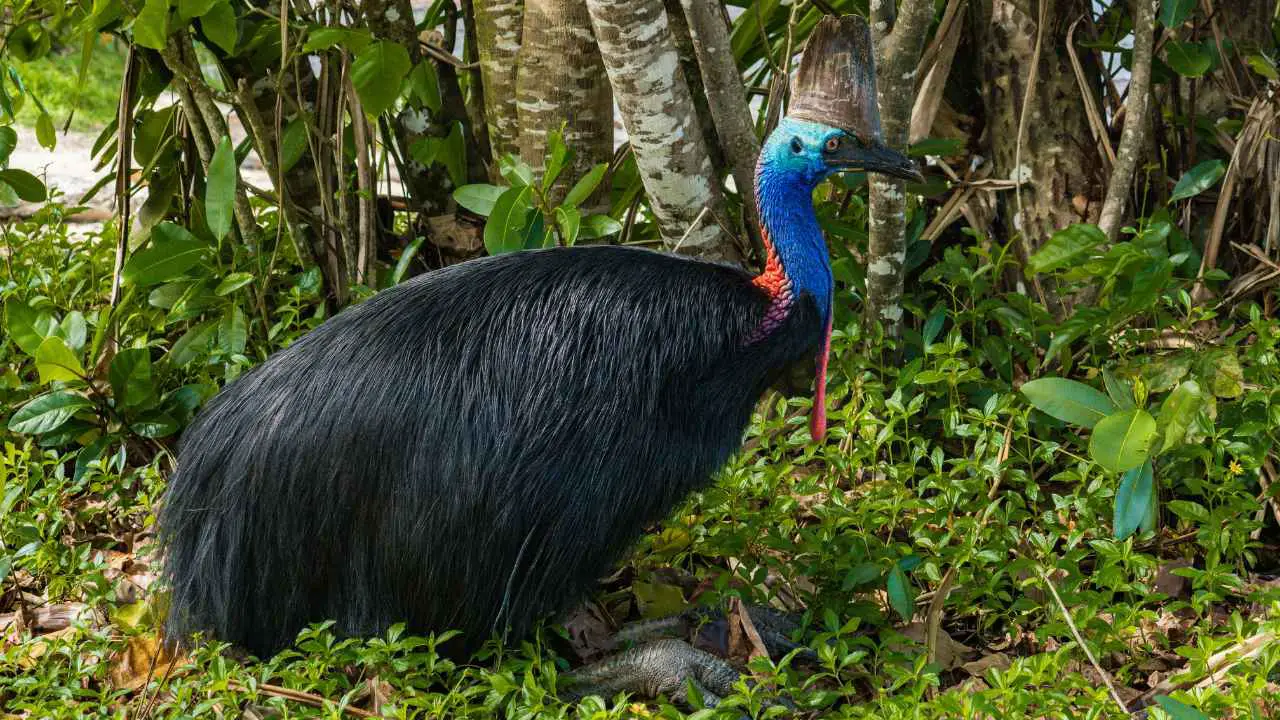
The Cassowary, specifically the Southern Cassowary (Casuarius casuarius), is often cited as the world’s most dangerous bird. With its prehistoric appearance, vibrant colors, and towering stature, the Cassowary demands awe and respect. Native to the tropical rainforests of northeastern Australia, this bird is a living link to the age of dinosaurs.
Description and Habitat
Cassowaries are large, flightless birds with glossy black feathers and a distinctive blue and black head with bright red or orange neck wattles. They can stand up to 2 meters (about 6.5 feet) tall and weigh up to 58 kilograms (about 128 pounds). Their most striking feature might be the helmet-like casque atop their heads, thought to play a role in mate attraction and dominance displays. Cassowaries prefer the dense tropical rainforests of Queensland, where they can find fruit to feed on, which makes up the majority of their diet.
Reasons for Danger
The primary reasons Cassowaries are considered dangerous are their aggression and physical strength, particularly when they feel threatened or cornered. They possess powerful legs equipped with sharp claws, with the middle toe’s claw reaching up to 12 cm (about 5 inches) in length, capable of delivering lethal kicks. Cassowaries are generally shy and avoid human contact, but if provoked or if they feel their territory is invaded, they can become aggressive. While attacks on humans are rare, they have occurred, leading to serious injuries and even fatalities. The Cassowary’s formidable physical attributes and territorial nature underscore the importance of respecting these magnificent creatures from a distance, especially in their natural habitat.
Conclusion
Australia’s landscapes are teeming with life, offering a unique window into the diversity and complexity of nature. From the venomous Box Jellyfish and Sydney Funnel-Web Spider to the mighty Saltwater Crocodile and the elusive Cassowary, each of these creatures plays a pivotal role in their ecosystems. Our journey through the habitats of Australia’s ten most dangerous animals reveals not just the risks they pose to humans but also the marvel of their existence and the delicate balance that sustains the continent’s biodiversity.
Awareness and safety measures are crucial when living in or visiting Australia. Understanding the behavior of these animals, recognizing their habitats, and knowing how to respond in an encounter can significantly reduce the risk of harm. Education is a powerful tool in fostering coexistence with these incredible creatures, reducing fear through knowledge and respect.
Moreover, these animals, dangerous though they may be, face their own survival challenges. Habitat loss, climate change, and human activities threaten their existence. Conservation efforts are essential in ensuring that future generations may also marvel at these species, learn from them, and continue the work of preserving Australia’s unique wildlife.
We encourage everyone to delve deeper into the stories of these and other Australian animals. By doing so, we not only enhance our understanding and appreciation of the natural world but also become advocates for its protection. Let’s support conservation initiatives and embrace practices that safeguard our planet’s biodiversity. Together, we can ensure that Australia’s most dangerous animals remain a testament to the wild beauty of our world, rather than a memory of what once was.




